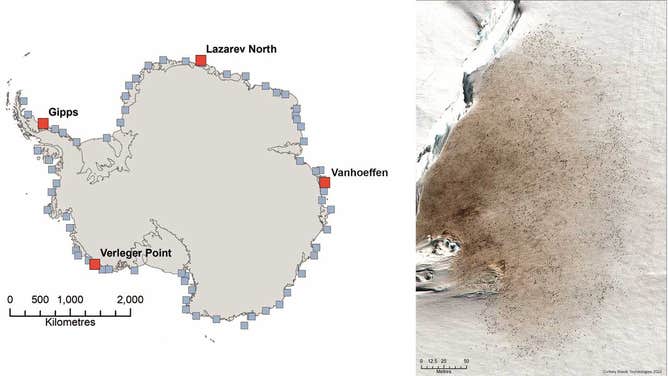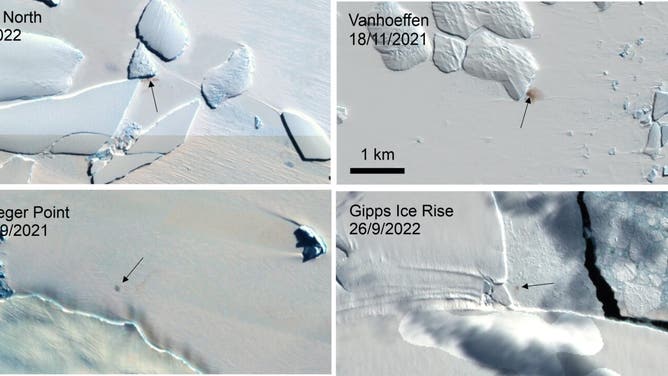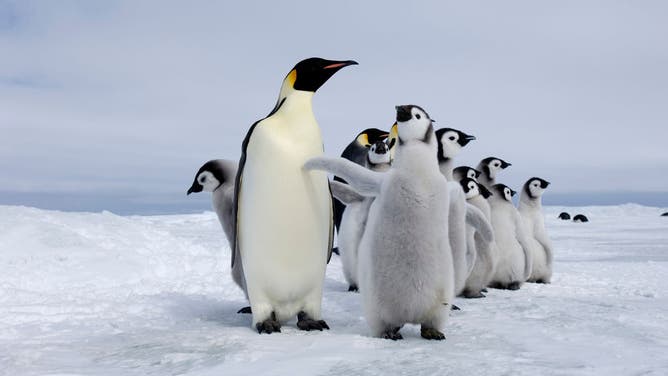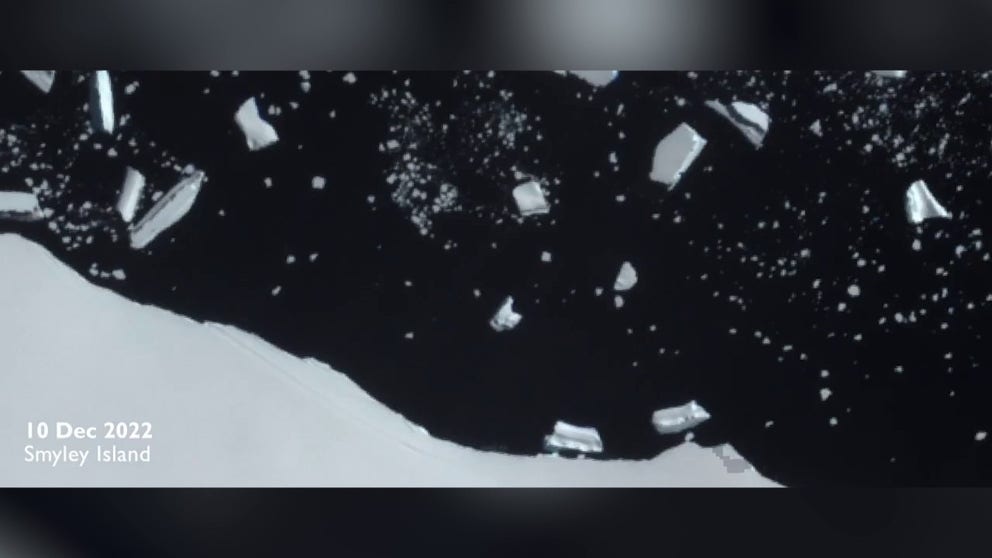Poop stains seen from space reveal 4 unknown emperor penguin colonies
Using satellite imagery, scientists from the British Antarctic Survey looked for the brown stains of the emperor penguin's brown guano to find four previously unknown colonies. However, even with the new discoveries, scientists say the future of the emperor penguin is “stark" because sea ice loss is causing “catastrophic" breeding failures.
'Catastrophic breeding failure' of penguins caused by low sea ice in Antarctica
FILE VIDEO: Record-low levels of sea ice in western Antarctica in late 2022 led to the breeding failure of four emperor penguin colonies, according to a study published on Thursday. (Courtesy: European Commission, Copernicus SENTINEL-2 via Storyful)
Scientists continue to monitor emperor penguin colonies using various methods, including looking for signs of the birds through satellites orbiting Earth.
Because getting to Antarctica and the remote penguin colonies is challenging, scientists can track penguin colonies using satellite imagery. A recent study published in the journal Antarctic Science by a British Antarctic Survey team discovered four previously unknown emperor penguin colonies by looking for large brown stains left by their accumulated poop, known as guano.
WATCH: 1-TRILLION-TON ICEBERG MAJESTICALLY FLOATS AWAY FROM ANTARCTICA
Using imagery from the European Commission’s Copernicus Sentinel-2 satellite and the Maxar WorldView-3 satellite, scientists from the British Antarctic Survey looked for the brown stains of the emperor penguin's brown guano to find four previously unknown colonies.

On the left, newly reported emperor penguin colonies, shown in red boxes. Light blue boxes denote other known extant colony sites. On the right, a high-resolution MAXAR satellite image of emperor penguin colony at the Vanhoeffen site.
(MAXAR/BAS)
The survey also found a colony called Umbeashi, which is considered to be no longer extant. Another vanished colony was also found to have relocated about 18 miles away from its original site.
Researchers say the four colonies and the Umbeashi colony increased the global emperor penguin population by about 5,700 pairs. There are now 66 known emperor penguin colonies.

Scientists from British Antarctic Survey have discovered four previously unknown emperor penguin breeding sites seen in these four satellite images. (Credit: Copernicus)
However, even with the discoveries, scientists say the future of the emperor penguin is "stark." Last year, British Antarctic Survey researchers reported a "catastrophic breeding failure" caused by sea ice loss.
LOW SEA ICE IN ANTARCTICA CAUSING 'CATASTROPHIC BREEDING FAILURE' OF PENGUINS, STUDY FINDS
"These newly identified locations fill in almost all the gaps in the known distribution of these iconic birds. All except one of these colonies are small with less than 1000 birds, so finding these new colonies makes little difference to the overall population size," said BAS scientist Peter Fretwell, who led the new study. "In fact, it is overshadowed by the recently reported breeding failures due to the early and fast ice loss."
The black-and-white birds are listed as a threatened species and need sea ice attached to shore for their breeding sites to lay eggs during the winter from May to June.
According to the British Antarctic Survey, satellite data from 2021-2023 shows the lowest sea ice extent in the 45-year satellite record. The sea ice loss from 1981 to now is equivalent to an area larger than Greenland, effectively reducing the breeding grounds for emperor penguins across the region.

File photo: Emperor Penguin adults and chicks at colony Snow Hill Island, Antarctica. (Photo by: David Tipling/Education Images/Universal Images Group via Getty Images)
(Getty Images)
